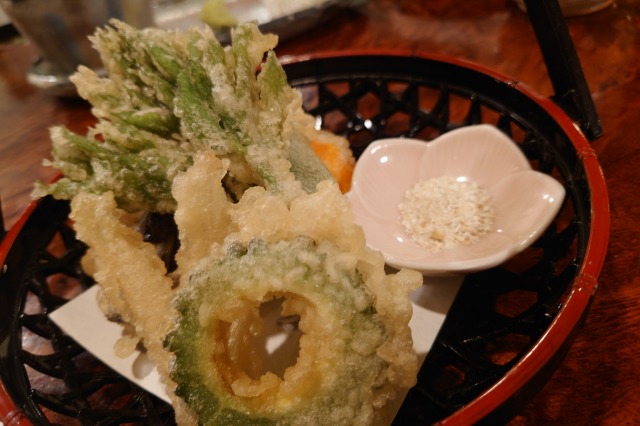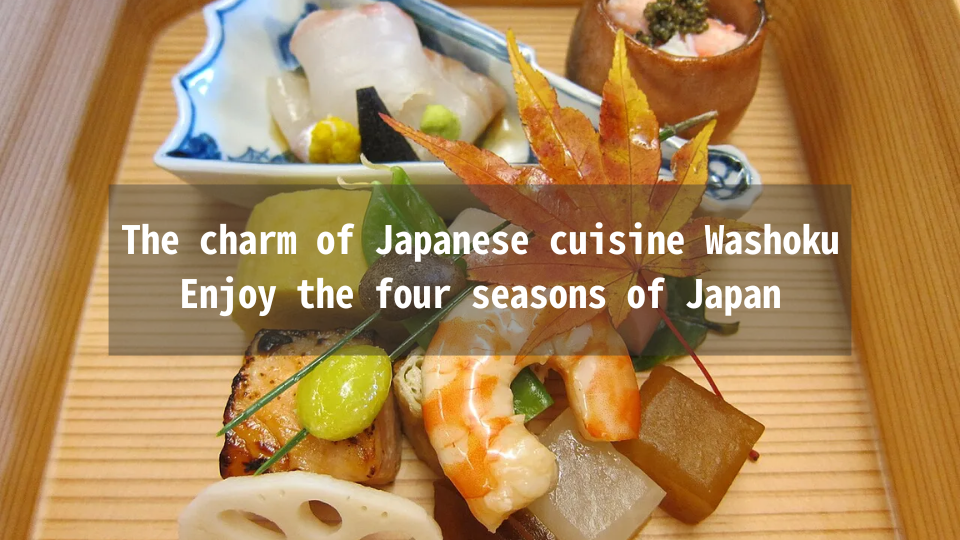Hello, this is the ShimaSuki editorial department.Japanese food culture, known as “washoku,” was registered as a UNESCO Intangible Cultural Heritage in 2013. One of its greatest features is the importance placed on the four seasons. Each season—spring, summer, autumn, and winter—brings its own unique ingredients, and the sense of the season is expressed not only in the flavors, but also in the appearance, aroma, and even the choice of tableware. Washoku is highly valued around the world as a food culture unlike any other.
The Deep Connection Between the Four Seasons and Washoku
Spring: A Season of Budding and Color
Spring brings vibrant mountain vegetables, bamboo shoots, and sea bream to the table. Dishes are often adorned with cherry blossom petals, and pale-colored tableware is used to evoke the feeling of spring’s arrival through all five senses. Typical spring dishes include tempura made with mountain vegetables, bamboo shoot rice, and sashimi of cherry blossom sea bream.

Summer: Dishes That Bring Coolness and Vitality
In summer, refreshing dishes are popular to help beat the heat. Grilled sweetfish, chilled somen noodles, and grilled eel are common, featuring light flavors or ingredients that provide stamina. Blue or glass tableware is chosen to create a visual sense of coolness.

Autumn: Savoring the Bounty and Aroma
Autumn is known as the “season of appetite” in Japan, with an abundance of ingredients. Matsutake mushrooms, chestnuts, Pacific saury, and salmon are in season, and dishes like matsutake rice, grilled saury, and chestnut rice are enjoyed. Table settings and tableware often feature autumn leaves, further enhancing the seasonal feeling.

Winter: Enjoying Warmth and Rich Flavors
n winter, hot pot dishes and stews take center stage. Popular items include fugu (pufferfish) sashimi, simmered root vegetables, and miso-based hot pots, making full use of seasonal vegetables and seafood. Warm-colored tableware and white presentations reminiscent of snow evoke the winter atmosphere.

The Importance of Seasonal Ingredients
In washoku, “shun” (seasonality) is highly valued. Seasonal ingredients are considered the most delicious, nutritious, and affordable. For example, summer watermelon is full of moisture and helps cool the body. By choosing such ingredients, Japanese people have long believed they can maintain a healthy diet.
There is also a strong tradition of enjoying “hatsumono,” the first harvest of the season. In the Edo period, it was believed that eating the first produce of the year would extend one’s life, and even today, hatsumono is regarded as special.
The Aesthetics of Presentation and Tableware
The charm of washoku is not limited to taste. The presentation and choice of tableware are also used to reflect the seasons, allowing diners to enjoy the beauty of color and form even before eating. In spring, cherry blossom motifs; in summer, cool glassware; in autumn, leaves and nuts; and in winter, snow and pine-themed dishes are commonly used.

How to Experience the Four Seasons Through Washoku
- Try seasonal limited menus at Japanese restaurants
- Challenge yourself with local cuisine using regional seasonal ingredients
- Enjoy sake and Japanese sweets made with ingredients specific to the season
Experiencing Japan’s four seasons through washoku is more than just a meal—it is a cultural experience.
At traditional Japanese restaurants and ryokan inns, you can enjoy authentic washoku that makes the most of each region’s seasonal ingredients. Savoring local flavors will enrich your travel memories. When visiting Japan, we encourage you to try the local specialties of each region.

Conclusion
Washoku makes the most of the blessings of each season, allowing you to enjoy the seasons with all five senses. Seasonal ingredients, colorful presentation, and beautiful tableware all reflect the Japanese respect for the four seasons and their sense of beauty. When you visit Japan, be sure to experience the allure of washoku and savor the changing seasons.



